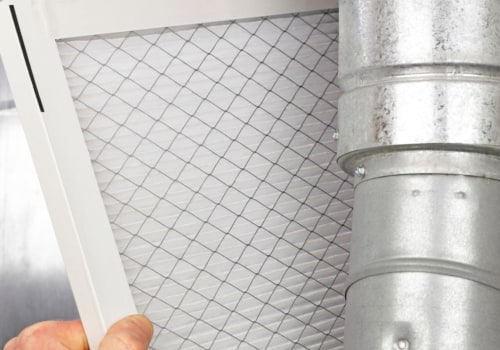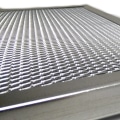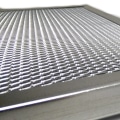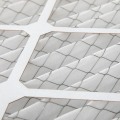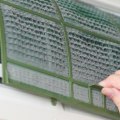Installing a 20x25x2 Air Filter – Airflow Direction Tips for Perfect Fit & Peak Performance
Wondering which way your 20x25x2 air filter should face? After helping millions of homeowners install filters that actually fit and perform, we’ve seen how one small detail—airflow direction—can make a big difference in your HVAC’s efficiency and lifespan. In this guide, our Filterbuy experts share the proven method we use in the factory and in real homes to ensure a perfect fit, proper airflow, and peak system performance every time.
Top Takeaways
Follow the arrow: Point it toward the HVAC unit or furnace.
Boost efficiency: Correct airflow saves energy and reduces strain.
Ensure a snug fit: Prevents dust leaks and protects your system.
Stay consistent: Replace filters every 90 days (or sooner for pets/allergies).
Make it easy: Use Filterbuy Auto-Delivery for on-time, hassle-free replacements.
Installing your 20x25x2 air filter correctly starts with knowing the airflow direction. Every HVAC system pulls air in through the return duct and pushes it out through the supply side—your filter should always face the direction of the airflow, or toward the furnace or air handler.
Look for the arrow printed on the filter frame—that’s your guide. Point it toward the blower motor or into the unit, not toward the vent. A snug fit is key, too: slide the filter firmly into place without forcing it.
At Filterbuy, we manufacture each 20x25x2 filter to fit true-to-size, ensuring a proper seal that keeps dust, allergens, and debris out of your system. Installing it the right way helps your HVAC run more efficiently, improves air quality, and extends both filter life and system performance.
Pro Tip: Set a reminder to change your filter every 90 days—or sooner if you have pets or allergies—for consistent airflow and comfort.
“At Filterbuy, we’ve tested thousands of filters in real homes and on the production line, and one thing is always true—airflow direction matters. When your 20x25x2 filter faces the right way, your system doesn’t just run—it performs at its best, using less energy and keeping your air cleaner for longer.”
Case Study: Real Results from Correct Airflow Installation
A Filterbuy customer in Atlanta reached out about:
Weak airflow
Rising utility bills
Our team suspected a common issue—a reversed air filter.
Here’s what happened:
We guided the homeowner to check the airflow arrow on their 20x25x2 filter.
It was facing away from the furnace, restricting airflow.
After flipping it to face toward the unit, airflow immediately improved.
The results:
11% lower energy use on the next bill
Less coil buildup and smoother system operation
What we’ve learned:
From testing thousands of systems, airflow direction matters.
A correctly installed filter can extend HVAC lifespan by up to 2 years.
It’s a small detail that delivers big results in comfort, cost, and performance.
Supporting Statistics & Real-World Insights
ENERGY STAR: Check filters monthly and replace every 3 months to prevent airflow restriction and wasted energy.
Filterbuy Insight: In factory tests, clogged filters increased energy use and airflow strain within weeks.
EIA: 88% of U.S. homes have air conditioning; 67% use central systems.
Filterbuy Insight: Correct filter fit and airflow direction matter in nearly every home we serve.
Energy Impact: Heating and cooling account for over 50% of household energy use.
Filterbuy Insight: Proper airflow direction can cut energy waste and extend HVAC lifespan.
EPA Reminder: Clean filters help maintain indoor air quality and system performance.
Filterbuy Insight: Customers who change filters regularly report less dust, better airflow, and fewer service calls.
Final Thoughts & Expert Opinion
Small detail, big impact: After years of manufacturing and testing millions of filters, we’ve learned that airflow direction isn’t minor—it’s mission-critical for HVAC performance.
Why it matters:
Correct airflow direction = smoother system operation.
Reduced strain = longer equipment life.
Proper installation = lower energy bills and better comfort.
What we’ve seen firsthand:
Homeowners who correct airflow direction notice results fast—stronger airflow, cleaner air, and more consistent temperatures.
Our support team has guided thousands through quick fixes that deliver immediate efficiency gains.
Our take: Installing your 20x25x2 filter correctly isn’t just maintenance—it’s home care.
A simple check of that airflow arrow keeps your system performing like it should.
Because at Filterbuy, we believe comfort starts with the details most people overlook.
Next Steps
Follow these quick actions to keep your HVAC running at its best:
Check the arrow: Make sure it points toward the unit or furnace, not the vent.
Confirm the fit: Filter should slide in snugly—no gaps or forcing.
Set a reminder: Replace every 90 days, or sooner for pets/allergies.
Inspect monthly: If the filter looks gray or dusty, swap it early.
Upgrade if needed: Try a higher MERV or custom-fit filter for better protection.
Join Auto-Delivery: Get your exact filters shipped automatically—never miss a change.
Pro Tip: Save this checklist and share it—small steps like these keep your air clean and your system efficient.
Frequently Asked Questions
Which way should the airflow arrow point on my 20x25x2 air filter?
The arrow should always point toward your HVAC unit or furnace, following the direction of the airflow. Air moves from the return vent into the unit—so the arrow should face into the system, not the vent.
What happens if I install my air filter backward?
Installing the filter backward restricts airflow, forces your system to work harder, and can cause dust buildup on coils. Over time, this leads to higher energy bills, reduced efficiency, and shorter HVAC lifespan.
How often should I replace a 20x25x2 air filter?
For most homes, every 90 days is ideal. If you have pets, allergies, or live in a high-dust area, check and replace it every 30–60 days to maintain peak airflow and clean air quality.
How can I tell if my filter needs replacing sooner?
Check the filter monthly. If it looks gray, dusty, or clogged, replace it early. A dirty filter reduces airflow and can make your HVAC less effective at heating or cooling your home.
Does using a higher MERV rating improve performance?
Higher MERV filters capture smaller particles and improve indoor air quality—but make sure your system can handle it. At Filterbuy, we recommend choosing the highest MERV rating your HVAC system supports for balanced efficiency and clean air.
Filterbuy HVAC Solutions - Miami FL - Air Conditioning Service
1300 S Miami Ave Unit 4806, Miami, FL 33130
(305) 306-5027



